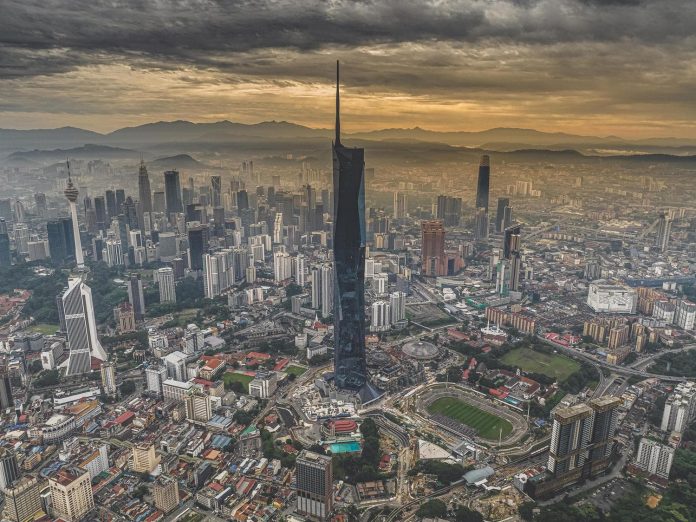About 50 years ago, only 25 buildings worldwide reached heights surpassing 200 meters, according to the Council on Tall Buildings and Urban Habitat (CTBUH). But now, nearly 1,500 towering structures stand tall in our cities, symbolising architectural skill and urban evolution.
Asia is a powerhouse in this skyscraper revolution, leading the world with its rapid urban development and architectural innovation. When we zoom into Malaysia, our country ranks fourth worldwide and takes the lead in Southeast Asia with a remarkable number of 366 high-rise buildings!
Tall buildings are iconic symbols of modern urban landscapes and are indispensable to contemporary urban environments. Besides promoting denser urban living and healthier lifestyles, they drive innovation in construction technology and materials.
While we have all heard of the more popular buildings, here are three more tall, equally impressive ones!
- CITIC Tower, Beijing (528 meters)
Named after a state-owned investment company, the China International Trust Investment Corporation (CITIC), the CITIC Tower is the tallest building in Beijing as of 2019. It also ranks fourth in China and eighth worldwide, according to architecture magazine, designboom.
The building’s design draws inspiration from the ancient Chinese “zun“, a ceremonial bronze vessel symbolising wealth, status, and spiritual connection in the Chinese culture.
However, the more interesting fact about the building is its construction timeline. The building owner was able to save up to 320,000 work hours! This was achieved using a self-climbing, construction-time-use elevator known as KONE JumpLift that was able to ferry the 4,000 workers and their tools around the site. According to Timo Vlasov from KONE Major Projects, the elevator literally jumps up the building’s permanent elevator shaft as the building grows taller.
- Ping An Finance Centre, Shenzhen (599 meters)
The Ping An Financial Centre is a striking addition to the skyline in Shenzhen. It has been recognised as the world’s fourth-tallest skyscraper by the Council on Tall Buildings and Urban Habitat. It also has the world’s largest stainless-steel facade, incorporating 1,542 kg of metal to resist corrosion and withstand Shenzhen’s salty coastal environment.
This 100-floor office tower, supported by a retail and conference podium, has become a hub of activity, serving a thriving community of 15,500 workers and attracting 9,000 daily visitors. The building is renowned not only for its impressive height but also for its high-speed elevators engineered by KONE. These elevators travel a staggering 553 meters at a maximum speed of 10 meters per second, ensuring swift and efficient vertical transportation for its occupants and visitors.
- Makkah Clock Royal Tower Hotel, Mecca (601 meters)
Did you know that New York is not the only city that never sleeps? You can add Mecca to the list. Perhaps that’s why it needs a good clock tower. The Makkah Clock Royal Tower Hotel, now known as the Makkah Clock Royal Tower, A Fairmont Hotel, is a 5-star luxury hotel that is also a part of an iconic Clock Towers Complex.
At 601 meters tall, it is the tallest hotel in the world, with the largest indoor space of 1.6 million sq. meters for the total project. The Makkah Clock is visible from approximately 17km away at night and up to 12km during the day. The 120-floor building also houses the lunar research centre and cosmology centre with some of the biggest telescopes in the world.
The tower had an interesting challenge of ensuring the smooth flow of 75,000 guests leaving the premises within 30 minutes or less during the five daily prayer times. To manage this, the developer engaged KONE to develop a special group control software with artificial intelligence (AI) capabilities to learn and track passenger traffic patterns in order to optimise people flow.
BONUS! Merdeka 118 (679 meters)
Merdeka 118 is not just another skyscraper; it is deeply rooted in Malaysia’s history! The building is inspired by Tunku Abdul Rahman’s (TAR) iconic “Laungan Merdeka“, where the architecture features a distinctive silhouette with an outstretched hand at the top.
Inside this 118-story tower, the elevators enhance convenience by reducing wait times and improving people flow. Advanced technology by KONE ensures easy navigation, while built-in safety features offer peace of mind during emergencies.
Plus, Merdeka 118 will feature the world’s highest observation deck at 566 meters higher than Burj Khalifa’s deck! Amazing, right?
Growing Cities Require Innovative Vertical Transformation
As cities continue to grow, these towering structures have never been more critical to global economic and social development, shaping the very fabric of our urban landscapes.
Just think about life without elevators—getting to the higher floors would mean tackling countless flights of stairs, leaving you exhausted after just a few floors. This shows just how important elevators are in our urban world! Thankfully, elevator technology has come a long way, making buildings accessible and efficient for everyone. Now, you can effortlessly transport to your desired floor without breaking a sweat.
As urban landscapes change, tall buildings become essential to meet the needs of growing urban populations. Companies like KONE, alongside others in the industry, play a crucial role in ensuring these towering structures are functional, efficient, and more sustainable!










